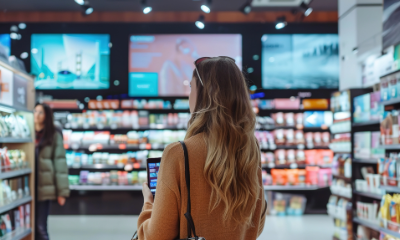Enhance Customer Experience with Smart Signage Technology
Introduction to Smart Signage Technology
In today’s fast-paced and highly competitive business landscape, enhancing customer experience has become a top priority for companies across various industries. One innovative technology that has emerged as a game-changer in this regard is smart signage. Smart signage refers to the use of digital displays and interactive screens to deliver dynamic and personalized content to customers. This technology has revolutionized the way businesses communicate with their target audience, providing a more engaging and immersive experience.
Benefits of Smart Signage in Enhancing Customer Experience
Smart signage technology offers a plethora of benefits when it comes to enhancing customer experience. Firstly, it allows businesses to deliver targeted and personalized content to their customers. By analyzing customer data and preferences, smart signage can display relevant information, promotions, and recommendations, creating a more personalized and tailored experience. This not only increases customer satisfaction but also drives sales and customer loyalty.
Secondly, smart signage enables businesses to provide real-time information and updates to customers. Whether it’s displaying live social media feeds, weather updates, or queue management systems, smart signage keeps customers informed and engaged. This not only improves the overall customer experience but also reduces perceived wait times, leading to higher customer satisfaction.
Furthermore, smart signage technology enables businesses to create interactive and immersive experiences for their customers. With touchscreens and gesture recognition capabilities, customers can actively engage with the content displayed on the screens. This interactivity not only captures attention but also encourages customers to explore and discover more about the products or services being offered. This ultimately leads to increased customer engagement and a more memorable experience.
Implementing Smart Signage Solutions for Improved Customer Engagement
Implementing smart signage solutions requires careful planning and consideration. Firstly, businesses need to identify their specific goals and objectives for using smart signage. Whether it’s increasing sales, improving customer satisfaction, or enhancing brand awareness, having clear objectives will guide the implementation process.
Next, businesses need to invest in the right hardware and software solutions. This includes choosing the appropriate digital displays, touchscreens, and content management systems that align with their specific needs. It’s crucial to select reliable and user-friendly technology to ensure a seamless customer experience.
Once the hardware and software are in place, businesses need to create compelling and engaging content for their smart signage. This involves designing visually appealing graphics, videos, and interactive elements that capture attention and deliver the intended message. Content should be regularly updated to keep customers engaged and informed.
Finally, businesses should continuously monitor and analyze the performance of their smart signage solutions. By collecting data on customer interactions, engagement levels, and conversion rates, businesses can identify areas for improvement and make data-driven decisions to enhance the customer experience further.
Case Studies: Successful Integration of Smart Signage Technology
Several businesses have successfully integrated smart signage technology to enhance their customer experience. One notable example is McDonald’s, which implemented digital menu boards in their restaurants. These digital displays not only allowed for easy menu updates but also enabled targeted promotions based on customer preferences and location. As a result, McDonald’s reported a significant increase in sales and customer satisfaction.
Another case study is Sephora, a leading beauty retailer. Sephora introduced smart mirrors in their stores, which used augmented reality technology to allow customers to virtually try on makeup products. This interactive and immersive experience not only increased customer engagement but also led to a 30% increase in sales of featured products.
In the hospitality industry, Marriott Hotels implemented smart signage solutions in their lobbies and guest rooms. These digital displays provided real-time information on hotel amenities, local attractions, and personalized recommendations. This not only improved the overall guest experience but also increased revenue from on-site services and amenities.
In conclusion, smart signage technology has proven to be a powerful tool for enhancing customer experience. By delivering targeted and personalized content, providing real-time information, and creating interactive experiences, businesses can engage customers on a deeper level and drive sales and loyalty. With careful planning and implementation, businesses can leverage smart signage to stay ahead in today’s competitive market.

